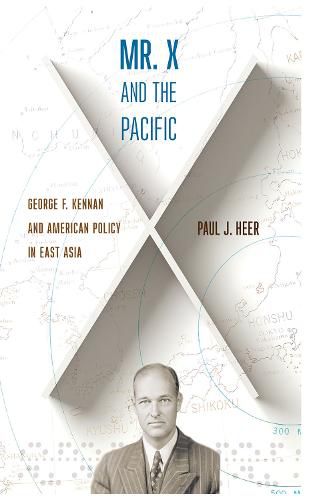Readings Newsletter
Become a Readings Member to make your shopping experience even easier.
Sign in or sign up for free!
You’re not far away from qualifying for FREE standard shipping within Australia
You’ve qualified for FREE standard shipping within Australia
The cart is loading…






George F. Kennan is well known for articulating the strategic concept of containment, which would be the centerpiece of what became the Truman Doctrine. During his influential Cold War career he was the preeminent American expert on the Soviet Union. In Mr. X and the Pacific, Paul J. Heer explores Kennan’s equally important impact on East Asia.
Heer chronicles and assesses Kennan’s work in affecting U.S. policy toward East Asia. By tracing the origins, development, and bearing of Kennan’s strategic perspective on the Far East during and after his time as director of the State Department’s Policy Planning Staff from 1947 to 1950, Heer shows how Kennan moved from being an ardent and hawkish Cold Warrior to, by the 1960s, a prominent critic of American participation in the Vietnam War.
Mr. X and the Pacific provides close examinations of Kennan’s engagement with China (both the People’s Republic and Taiwan), Japan, Korea, and Vietnam. Country-by-country analysis paired with considerations of the ebb and flow of Kennan’s global strategic thinking result in a significant extension of our estimation of Kennan’s influence and a deepening of our understanding of this key figure in the early years of the Cold War. In Mr. X and the Pacific Heer offers readers a new view of Kennan, revealing his importance and the totality of his role in East Asia policy, his struggle with American foreign policy in the region, and the ways in which Kennan’s legacy still has implications for how the United States approaches the region in the twenty-first century.
$9.00 standard shipping within Australia
FREE standard shipping within Australia for orders over $100.00
Express & International shipping calculated at checkout
George F. Kennan is well known for articulating the strategic concept of containment, which would be the centerpiece of what became the Truman Doctrine. During his influential Cold War career he was the preeminent American expert on the Soviet Union. In Mr. X and the Pacific, Paul J. Heer explores Kennan’s equally important impact on East Asia.
Heer chronicles and assesses Kennan’s work in affecting U.S. policy toward East Asia. By tracing the origins, development, and bearing of Kennan’s strategic perspective on the Far East during and after his time as director of the State Department’s Policy Planning Staff from 1947 to 1950, Heer shows how Kennan moved from being an ardent and hawkish Cold Warrior to, by the 1960s, a prominent critic of American participation in the Vietnam War.
Mr. X and the Pacific provides close examinations of Kennan’s engagement with China (both the People’s Republic and Taiwan), Japan, Korea, and Vietnam. Country-by-country analysis paired with considerations of the ebb and flow of Kennan’s global strategic thinking result in a significant extension of our estimation of Kennan’s influence and a deepening of our understanding of this key figure in the early years of the Cold War. In Mr. X and the Pacific Heer offers readers a new view of Kennan, revealing his importance and the totality of his role in East Asia policy, his struggle with American foreign policy in the region, and the ways in which Kennan’s legacy still has implications for how the United States approaches the region in the twenty-first century.